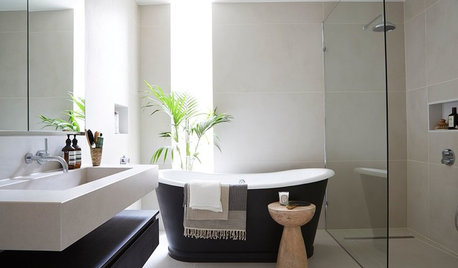How difficult are Anthuriums?
greenlarry
18 years ago
Related Stories

HOUSEPLANTSHow to Choose a Plant for Your Bathroom
An expert shares his top picks for houseplants that can stand low light and fluctuating temperatures
Full StoryMore Discussions
I have seen these for sale in our village recently but Ive always shied away from them(and Calocasias) as
I imagine them to be incredibly difficult to grow in a modern home.
But how difficult are they really?
We have central heating but I grow palms well by providiing extra humidity, and as we have young kids the
temperature is up most of the time to about 20C at night, so that should be warm enough.
Feasible?

susanlynne48
bihai
Related Professionals
Deer Park Landscape Architects & Landscape Designers · Simi Valley Landscape Architects & Landscape Designers · Harvey Landscape Architects & Landscape Designers · Dallas Landscape Contractors · Fair Lawn Landscape Contractors · Fairfield Landscape Contractors · Morrisville Landscape Contractors · Florida City General Contractors · Shaker Heights General Contractors · Woodmere General Contractors · Bountiful Siding & Exteriors · Dale City Siding & Exteriors · Poway Siding & Exteriors · Clearfield Siding & Exteriors · North Richland Hills Siding & Exteriorsphilofan
greenlarryOriginal Author
planty01976
susanlynne48
ablazeros
exoticrainforest
susancva